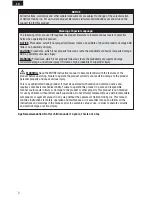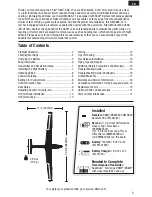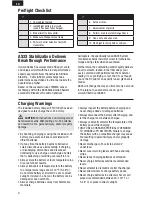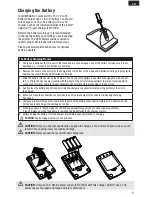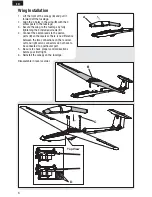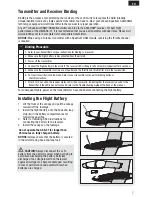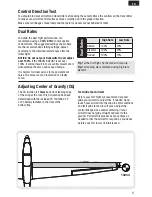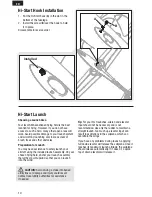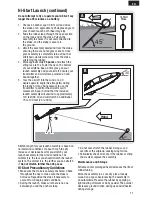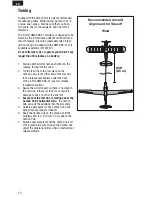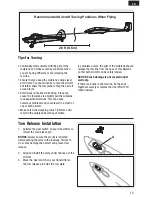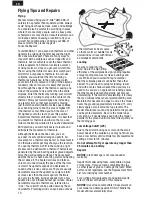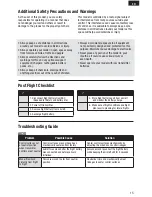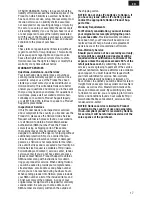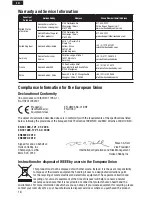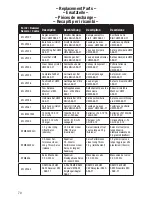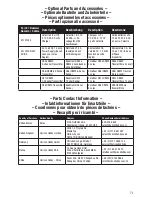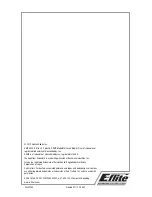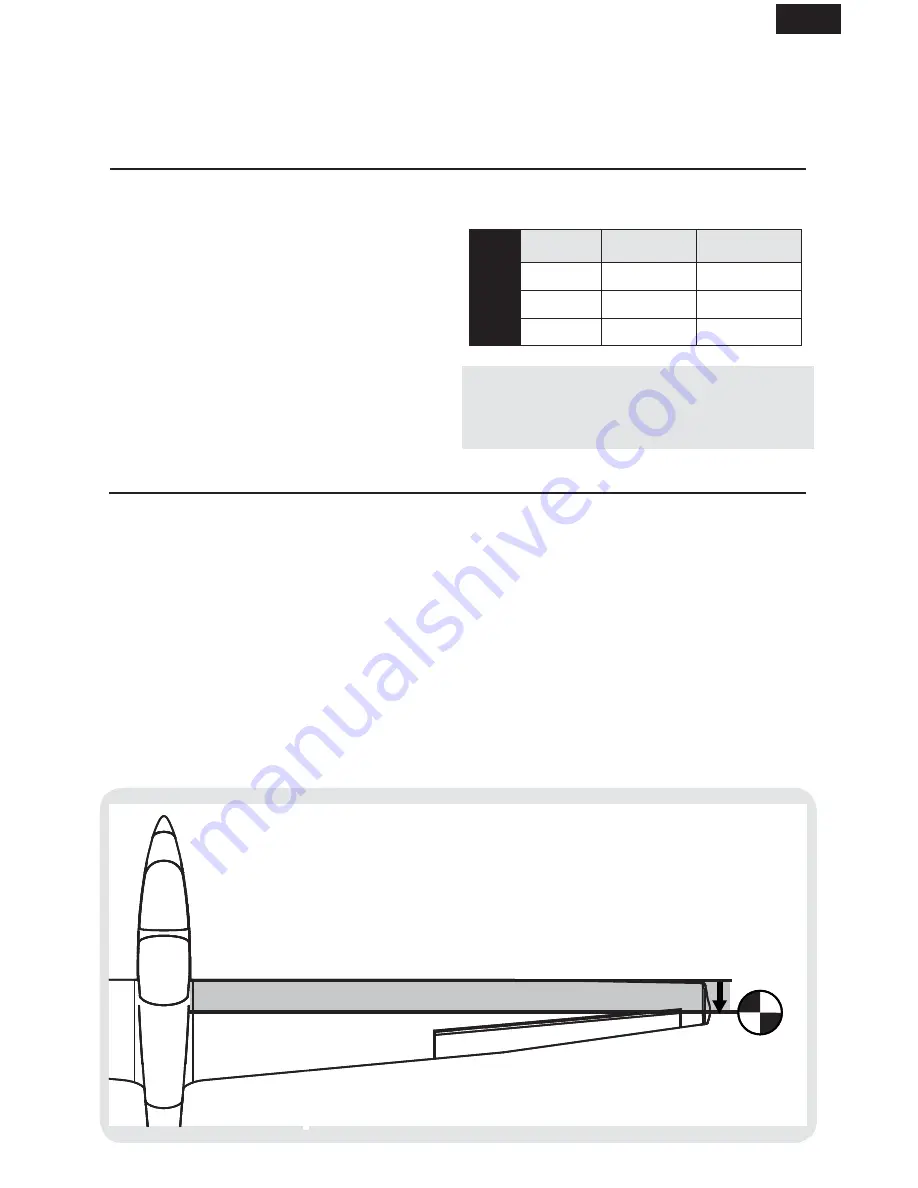
9
EN
You should bind your aircraft and transmitter before doing these tests. Move the controls on the transmitter
to make sure aircraft control surfaces move correctly and in the proper direction.
Make sure tail linkages move freely and that paint or decals are not adhered to them.
Control Direction Test
Dual Rates
To obtain the best fl ight performance, we
recommend using a DSM2/DSMX radio capable
of Dual Rates. The suggested settings shown here
are the recommended starting settings. Adjust
according to the individual preferences after the
initial fl ight.
NOTICE:
Do not set your transmitter travel adjust
over 100%.
If the TRAVEL ADJUST is set over
100%, it will not result in more control movement, it
will overdrive the servo and cause damage.
It is normal for linear servos to make signifi cant
noise. The noise is not an indication of a faulty
servo.
Tip
: For the fi rst fl ight, fl y the model in low rate.
Tip:
For landing, we recommend using high rate
elevator.
Dual Rates
High Rate
Low Rate
Aileron
100%
70%
Elevator
100%
70%
Rudder
100%
70%
Adjusting Center of Gravity (CG)
The CG location is
13mm
back from leading edge
of the wing at the root. This CG location has been
determined with the included 1S 150mAh 3.7V
Li-Po battery installed in the front of the
battery tray.
Test Glide Your Aircraft
Before your fi rst fl ight, we recommend you test
glide your aircraft to adjust trim, if needed. Hand
launch your aircraft into the wind in calm conditions
and let it glide to land in soft grass. Adjust the
control linkages (see control centering) if your
aircraft does not glide straight and level to the
ground. Perform this process as many times as
needed to trim the aircraft to respond as you desire
before your fi rst tow or Hi-Start launch.
13mm


